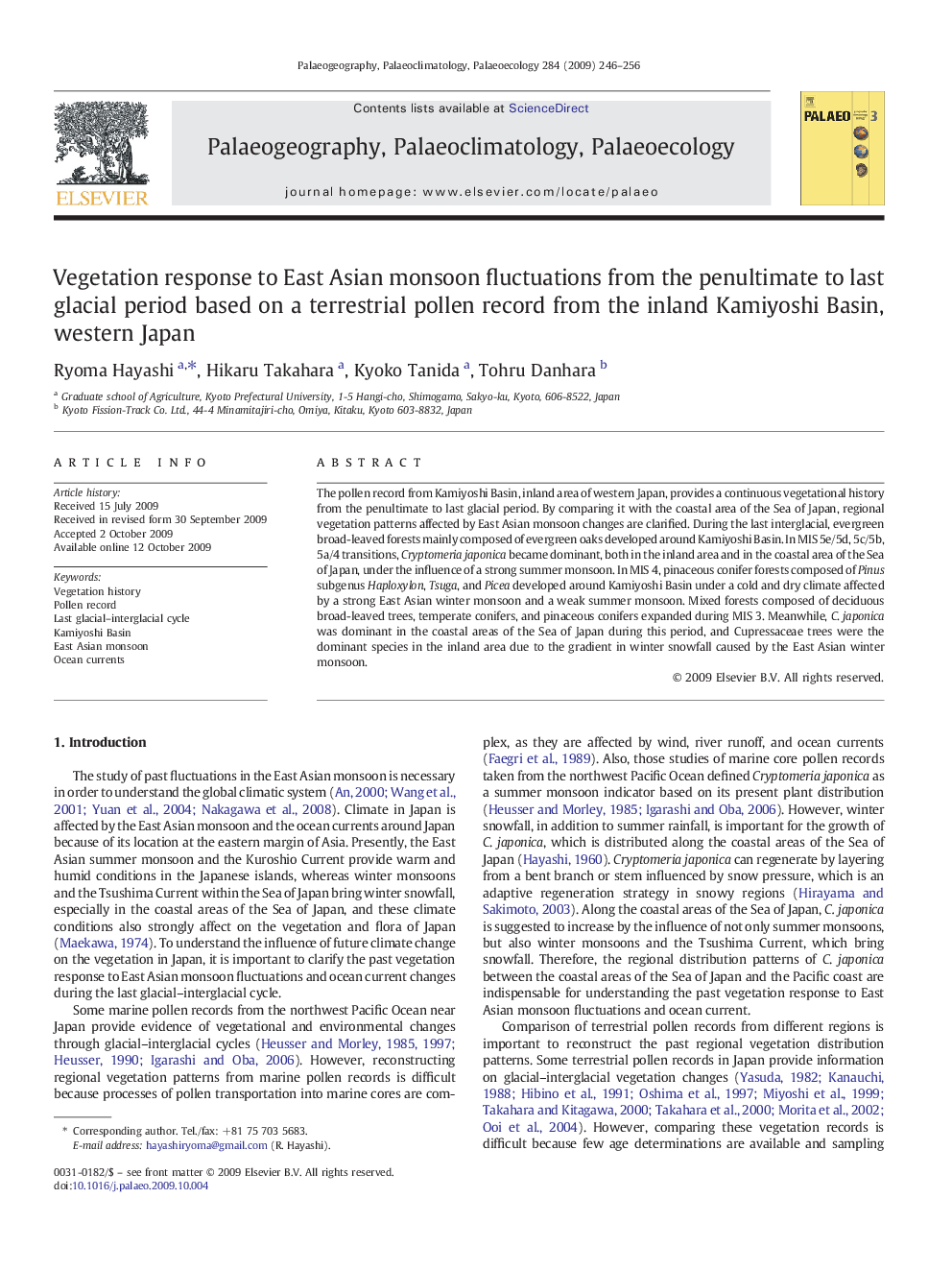| کد مقاله | کد نشریه | سال انتشار | مقاله انگلیسی | نسخه تمام متن |
|---|---|---|---|---|
| 4467902 | 1622289 | 2009 | 11 صفحه PDF | دانلود رایگان |

The pollen record from Kamiyoshi Basin, inland area of western Japan, provides a continuous vegetational history from the penultimate to last glacial period. By comparing it with the coastal area of the Sea of Japan, regional vegetation patterns affected by East Asian monsoon changes are clarified. During the last interglacial, evergreen broad-leaved forests mainly composed of evergreen oaks developed around Kamiyoshi Basin. In MIS 5e/5d, 5c/5b, 5a/4 transitions, Cryptomeria japonica became dominant, both in the inland area and in the coastal area of the Sea of Japan, under the influence of a strong summer monsoon. In MIS 4, pinaceous conifer forests composed of Pinus subgenus Haploxylon, Tsuga, and Picea developed around Kamiyoshi Basin under a cold and dry climate affected by a strong East Asian winter monsoon and a weak summer monsoon. Mixed forests composed of deciduous broad-leaved trees, temperate conifers, and pinaceous conifers expanded during MIS 3. Meanwhile, C. japonica was dominant in the coastal areas of the Sea of Japan during this period, and Cupressaceae trees were the dominant species in the inland area due to the gradient in winter snowfall caused by the East Asian winter monsoon.
Journal: Palaeogeography, Palaeoclimatology, Palaeoecology - Volume 284, Issues 3–4, 30 December 2009, Pages 246–256